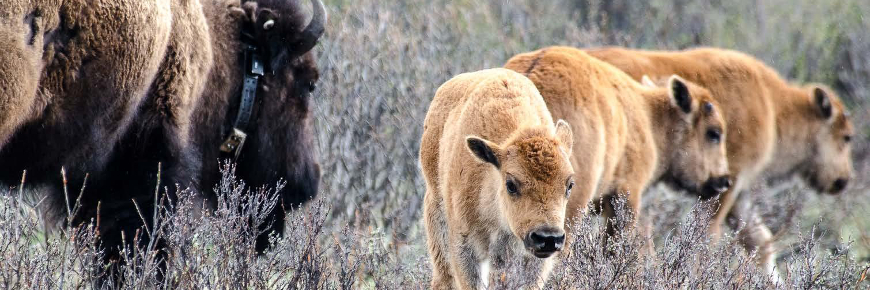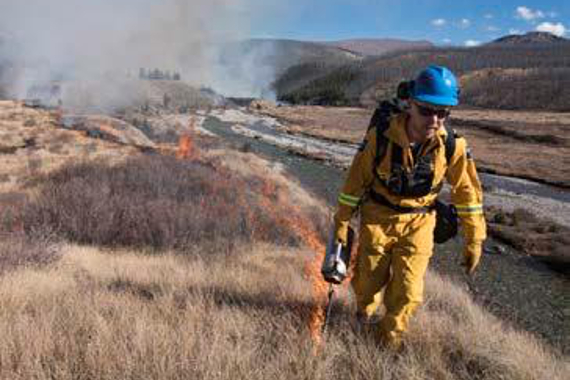
Historic homecoming
Reintroducing bison to Banff National ParkFootnote *
What’s the issue?

Over 140 years ago, plains bison were hunted nearly to extinction throughout the Great Plains and the eastern slopes of the Continental Divide, including the area that later became Banff National Park. The consequences have been significant, including reduced biodiversity and a loss of ecosystem function. As a keystone species, bison have a disproportionately large influence on other species and natural communities. Their presence on the landscape helps maintain habitat diversity for an array of plants and animals, especially grassy meadows, and the movement of bison herds redistributes nutrients and energy resources throughout the ecosystem. Their loss has also deeply affected Indigenous peoples, who have vital cultural connections with bison. In short, the absence of plains bison in Banff has created a cascade of adverse ecological and cultural impacts.
What’s our approach?
- Consult with Indigenous peoples, governments and experts (e.g. Elk Island National Park, bison producers) to plan the reintroduction.
- Monitor ecosystems to compare changes before and after the reintroduction of bison.
- Burn 1,500 hectares of meadow communities to improve forage for grazing.
- Reintroduce 16 plains bison to a fenced pasture, eventually releasing the herd so they are free roaming.
- Use natural features and deflection fencing to discourage bison excursions and ensure fence is permeable for other large mammals.
- Achieve a breeding population of 30 bison by the year 2022.
- Share progress throughout the project often and broadly.
What’s been accomplished?
- Consulted with Indigenous groups, the public and others, resulting in an improved reintroduction plan.
- Completed two years of baseline monitoring of pre-release ecosystem conditions.
- Ignited prescribed fires across 865 hectares to improve the quality of meadow communities.
- Reintroduced 10 females and six males to a 6-hectare fenced-in pasture in February 2017, subsequently moving them to a 12-hectare natural pasture in summer 2017.
- Hosted two Indigenous ceremonies, providing the herd with the proper spiritual welcome following an absence of over 140 years.
- Tested fence designs to discourage bison from leaving the reintroduction area.
- Increased herd size to 26 with the birth of 10 healthy calves in May 2017.
- Celebrated our achievements with Canadians by connecting with over 800,000 virtual visitors.
Related links
- Igniting restoration
- Two pines in decline
- Conserving an alpine enigma
- Rescue the fescue
- Wildlife crossings
- Going with the flow
- Propagating success
- Listening to the sea, looking to the future
- Ecosystem on the edge
- Keeping dunes dynamic
- Wild about wolves
- Restoring kelp in Gwaii Haanas National Marine Conservation...
- Llgaay gwii sdiihlda, or restoring balance
- Date modified :